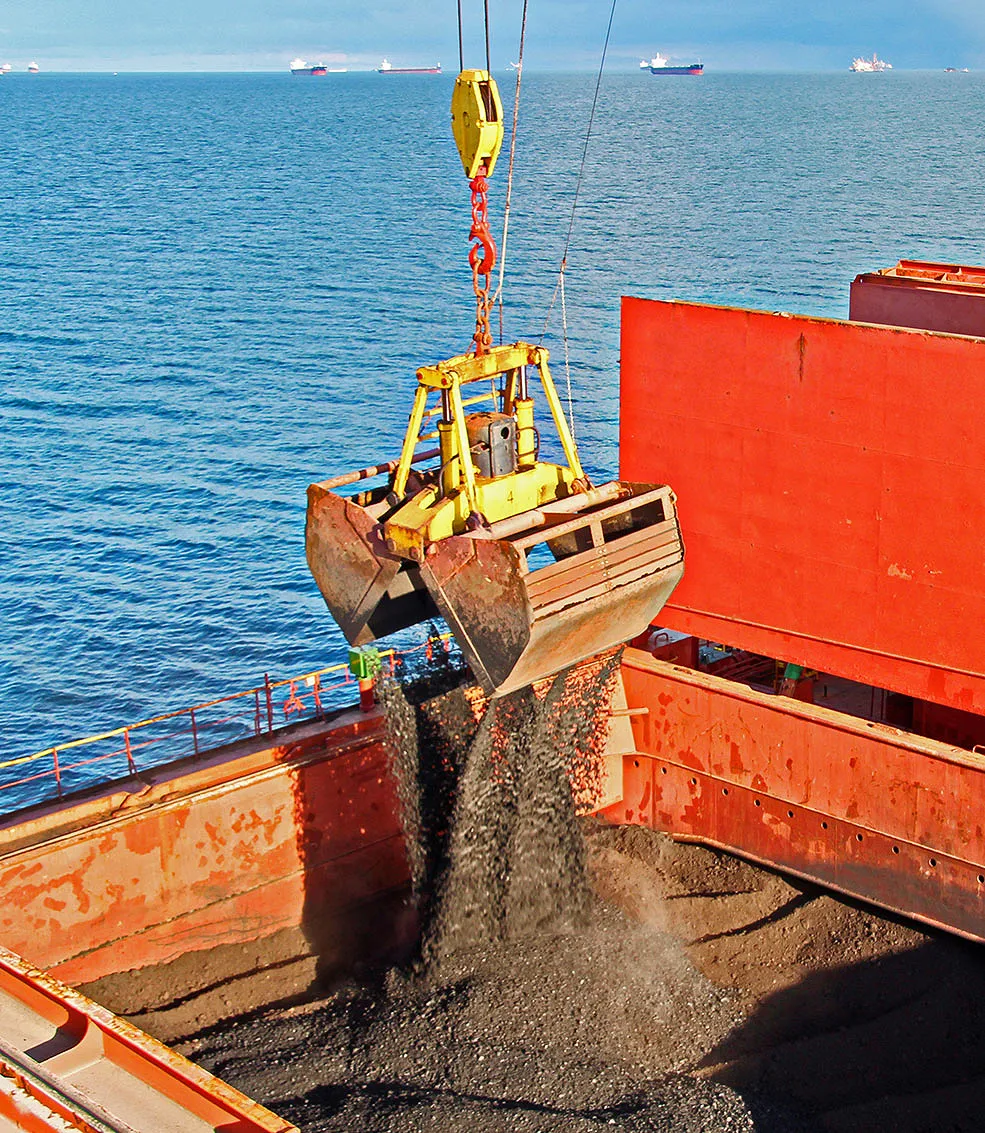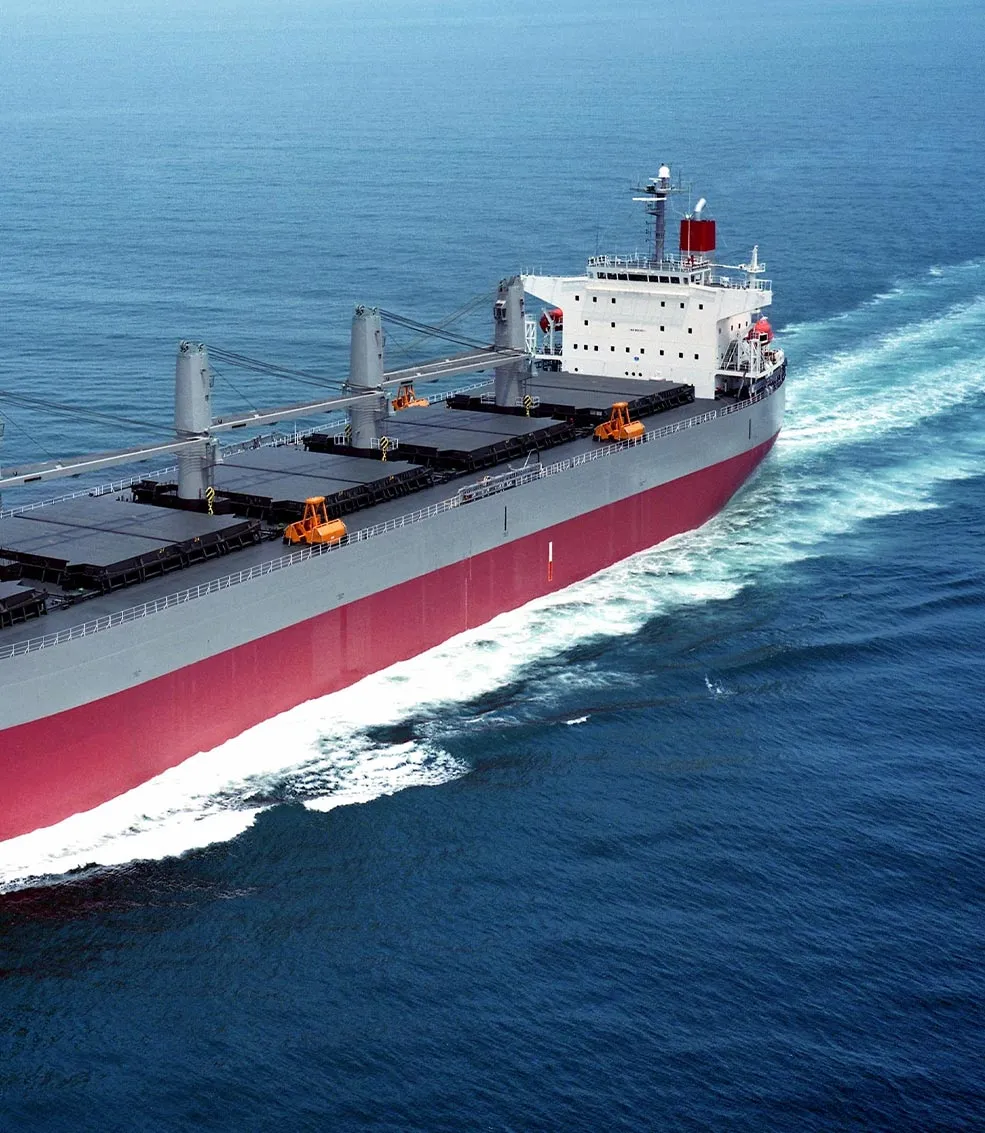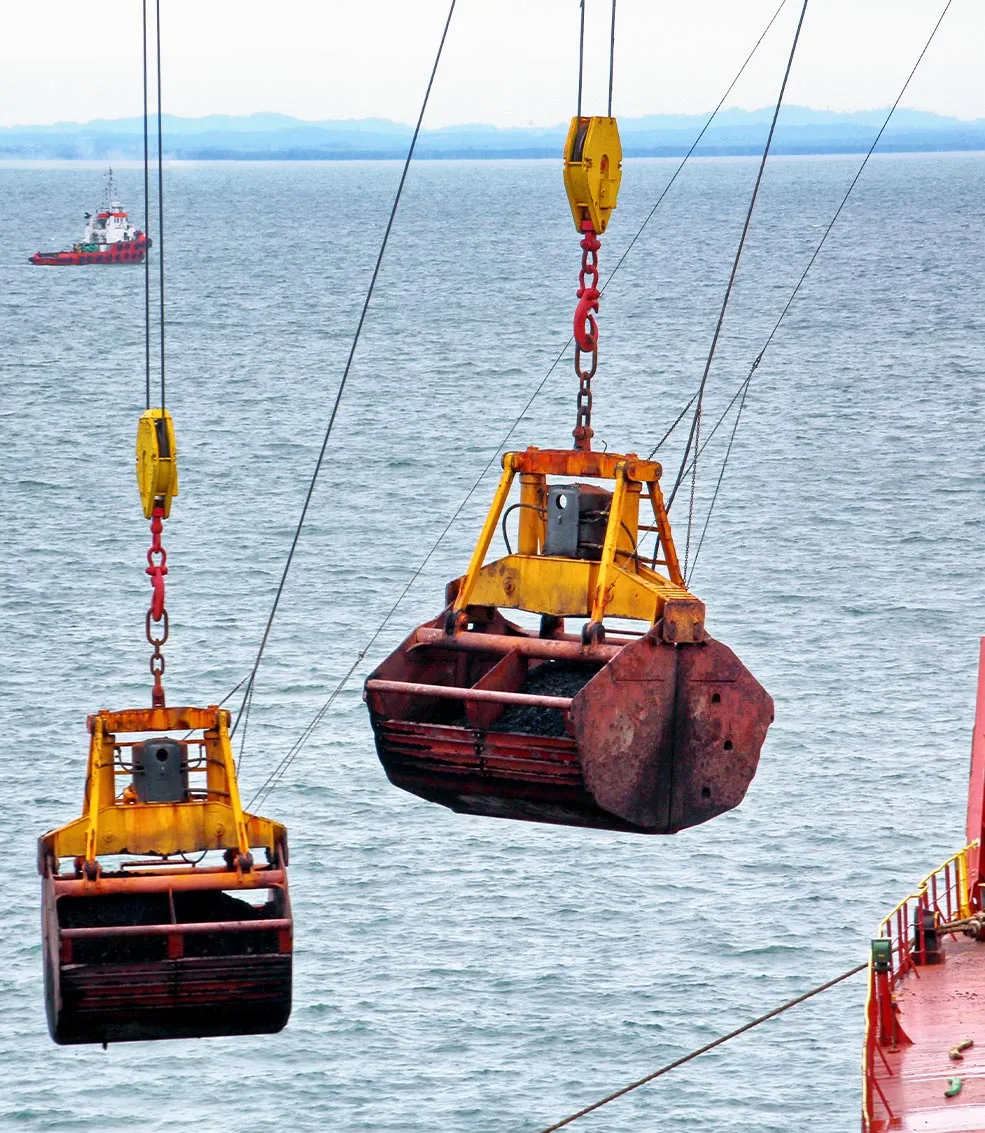Updated GRAB notation reduces hold reinforcement requirements
In response to technical advances resulting in lower-weight bulk cargo grabs with reduced damage potential, DNV GL has revised its GRAB notation for cargo hold reinforcements that will save owners money.
Providing shipowners with flexible classification options without compromising safety is a top priority for DNV GL. In many cases this can be done by accounting for differences between ship types and ship sizes that have evolved over time. One example is the class notation GRAB which attests to the cargo hold reinforcements in place to protect a ship from the impacts of cargo grabs during discharge operations. DNV GL recently updated the GRAB notation to allow owners of dry-cargo vessels to assume a much lower grab weight when calculating the required cargo hold reinforcements.
“The new version of this class notation will save owners money,” says Jan Rüde, Ship Type Expert MPV, Hull Structure & Outfitting at DNV GL. “It means that smaller ships which use lighter grabs will need less massive reinforcements. It also gives owners more flexibility to determine the design grab weight.”

Grabs can cause damage
When a grab is lowered into a cargo hold, it will eventually hit the bottom or occasionally even the side walls. This is unavoidable, and it can cause dents in the steel plates or even structural damage. Furthermore, a large, heavy grab is more likely to cause damage than a smaller, lighter one.
In addition, towards the end of the discharging process, one or two bulldozers are often lowered into the hold to push the remaining cargo into the middle so the grab can pick it up. The bulldozers likewise put a strain on the bottom and the lower side walls of the hold.

Growing ship and grab sizes increase impact loads
These stresses must be accounted for when designing a ship in order to protect its structural integrity. The bottom and side walls of a cargo hold must be strong enough to withstand the impact forces of grabs and bulldozer shields.
Manfred Kleiber, Head of Design Engineering at PEINER SMAG Lifting Technologies in Salzgitter, Germany, has seen grab designs change over time. “As bulk carriers and cargo holds grew bigger and bigger over the past decades, larger, heavier grabs were developed to accelerate the discharging process and minimize laytime,” he says. “As a result, the stresses on the bottom and side walls of bulk carriers grew as well.”

Smaller ships require different specifications
The size development of ships and grabs put owners of smaller vessels at a disadvantage. “Mega-sized grabs designed for today’s large bulkers cannot be used in the smaller cargo holds of MPVs. Nevertheless, in the past, the same reinforcement rules applied to small MPVs as to large bulk carriers,” DNV GL’s expert Rüde points out. Earlier versions of the GRAB notation from DNV GL, which is based on the shipbuilding rules in DNVGL-RU-SHIP Pt. 6, Ch. 1, Sec. 1, assumed that an empty grab weighs at least 20 metric tonnes. “This assumption turned out to be too conservative for MPVs,” says Rüde. “So owners asked us to consider easing the reinforcement requirements for smaller vessels that can use lightweight cargo grabs only.”

Driving the development of grab design
Grab manufacturers like PEINER SMAG have dedicated significant research and development resources to the improvement of cargo-handling equipment. To optimize the dead weight versus volume ratio of grabs while reducing the damage potential, engineers at PEINER have been pursuing two strategies: reduce material thickness and thereby the weight and resulting impact forces of their grabs; and round the corners and edges of grabs to blunt the force when they hit the wall of a cargo hold. “Designing and manufacturing these rounded contours has been quite a challenge,” says Kleiber.

Manufacturing precision avoids twisting and trickling
The thickness of the sheet material used for making grabs can only be reduced by using fine-grain structural steels that maintain high tensile strength. “These steels have a yield point that is twice as high as that of conventional structural steel,” Kleiber points out. “But the modulus of elasticity is the same. To ensure torsional stiffness and prevent deformation during use, we apply various reinforcement elements such as ribs and gussets. Using thinner sheet metal also reduces the amount of filler metals needed on welds."
To implement these design characteristics and achieve top quality, welders and other metal workers must adhere to strict manufacturing standards, Kleiber stresses. “A grab that twists or doesn’t close tightly when lifting free-flowing cargo such as sugar, salt or grains will cause trickle losses, delay the discharging operation and possibly drop precious product into the water or onto the quay.”

New GRAB notation caters to the needs of MPV owners
All these technical advancements have made it possible to revise the GRAB notation, says DNV GL’s Jan Rüde, since state-of-the-art lightweight grabs are efficient and also reduce wear on the steel plates in cargo holds. After thorough consultations with industry stakeholders, DNV GL modified its rules. The updated GRAB notation, which took effect in July 2020, specifies a minimum grab weight of 10 metric tonnes (mt). This means that as long as lightweight grabs are used exclusively, a lower reinforcement steel plate thickness is allowable under the class notation.
“Being able to use 16 mm instead of 18 mm steel plates, for example, adds up to a significant cost advantage in a newbuild project as well as an increase in payload the vessel can carry,”emphasizes Rüde. “Furthermore, as corrosion and wear gradually reduce the plate thickness, it may take much longer until the bottom of the cargo hold reaches the minimum thickness specified for the ship and thus until the plates need to be retrofitted. Another option MPV owners may consider when the bottom plates wear thinner is to use lighter grabs only – grabs which require a lower minimum thickness.”

Even cargo grabs can be digitized
The product range of PEINER SMAG also includes grabs for other industries, such as waste incinerators. “This type of equipment is highly automated,” says Manfred Kleiber. “In essence, cameras and sensors can be added to any grab to improve control and automate certain process steps.” Demand from ports and shipyards has been subdued so far, but may pick up as stakeholders begin to see the benefits. “Adding remote control elements and digital control loops could further reduce the damage potential and accelerate discharge operations,” the R&D expert says. Jan Rüde’s response is quick: “At DNV GL we would definitely support this development and offer our equipment certification and approval services as soon as ports and shipping companies indicate they are ready to take the next step.”
Contact us

- IVAN KUZKIN – Shutterstock.com
- PEINER SMAG Lifting Technologies GmbH
View image copyright information
